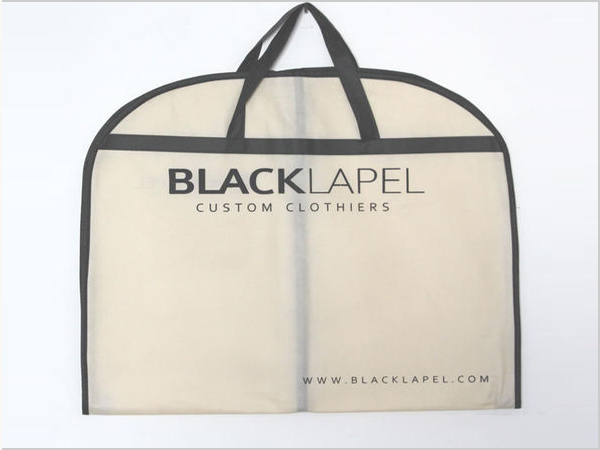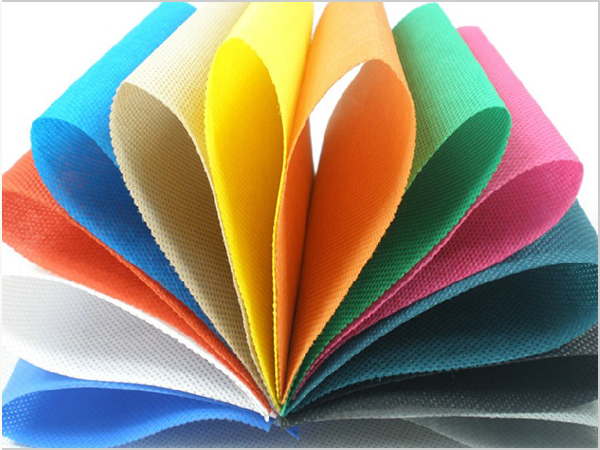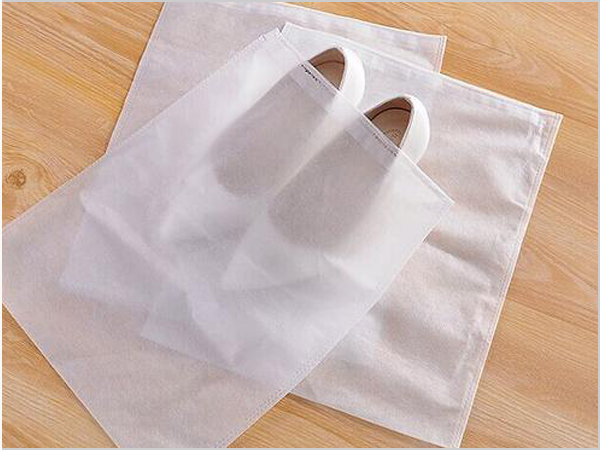- Xiangshuo has stood out in the field of spunbond nonwoven fabrics!
- How should enterprises respond to the impact of repeated tariffs
- PP non-woven fabric is a new type of environmental protection material!
- Under the tariff challenge, the textile and garment industry has a new opportunity
- Spunbonded non-woven fabric is an efficient, multi-functional modern material!

- Telephone: 0551- 66779966
- Cellphone: 18955130444
- Email: 58792982@qq.com
- Address: Building 1-2, East of Wubu Village Section, Hehuai Road, Wushan Town, Changfeng County, Hefei City, Anhui Province
In order to better promote the sustainable development of my country's non-woven industry and provide intellectual support for the high-quality development of the non-woven industry during the "14th Five-Year Plan" period, from June 22nd to 23rd, CINTE21 will be the tenth event. The China International Nonwovens Conference (CINC2021) was held.
This meeting invited leaders and experts from governments, industry organizations, universities and research institutions, and key enterprises in the industry chain to summarize the achievements of the nonwovens industry during the "13th Five-Year Plan" period and analyze the global nonwovens after the new crown pneumonia epidemic. The situation and challenges of the industry, focusing on the industry's technological innovation, green development, intelligent manufacturing and application expansion, talked about the development and technological upgrading of the nonwoven market. The list of "Top 10 Chinese Nonwovens Industry and Excellent Suppliers in 2020/2021" was also released at the meeting.
The industry development trend will not change
On the afternoon of June 22, at the beginning of the meeting, Sun Ruizhe, Chairman of the International Textile Manufacturers Federation and Chairman of the China National Textile and Apparel Council, delivered an opening speech. He said that industrial textiles are redefining the value form, market space and scene boundaries of the textile industry, and they are a future industry with unlimited application possibilities. Non-woven fabrics have superior performance structure, efficient production technology and relative cost advantages. The global output has exceeded 20 million tons, and it is the most important raw material for industrial textiles. In 2020, China will account for about 20% of the global nonwovens export trade share. China's nonwovens industry is forming significant advantages in terms of process technology, industrial scale, and overall cost.
Since the beginning of this year, the extraordinary growth of non-woven fabrics catalyzed by the new crown pneumonia epidemic has gradually recovered, and China's non-woven fabric industry has begun to enter the digestion period of early production capacity. In this regard, Sun Ruizhe said that the fluctuation and decline of economic indicators will not change the overall trend and trend of the development of the non-woven industry. At present, China is accelerating the formation of a "double cycle" pattern based on the domestic demand market, and the development of the nonwoven industry is in a period of important strategic opportunities. Subsequently, he put forward four suggestions on the high-quality development of the nonwoven industry: one is to build a high-quality supply system, the other is to open up a broader market space, the third is to create a sustainable value ecology, and the fourth is to create an intensive The main body of the industry.
How to continue to exert force in the post-epidemic era?
On the afternoon of June 22, the conference held a theme forum on "Sustainable Development of Nonwovens Industry in the Post-epidemic Era".
At the meeting, Li Guimei, vice president of China Industrial Textile Industry Association, introduced "China's nonwoven fabric industry status and high-quality development roadmap" to the audience. In 2020, my country will produce 8.788 million tons of non-woven fabrics in total, a year-on-year increase of 35.86%. In 2020, the main business revenue and total profit of nonwovens enterprises above designated size in my country were 175.28 billion yuan and 24.52 billion yuan, an increase of 54.04% and 328.11% year-on-year respectively, and the net profit rate was 13.99%, both reaching the best level in history.
Li Guimei pointed out that in 2020, spunbond, needle punching and spunlace will still be the three major processes in my country's nonwovens industry. The proportion of spunbond and spunlace production will increase, and the proportion of meltblown nonwovens will increase by 5 Percentage points, the proportion of acupuncture output decreased by nearly 7 percentage points. According to the incomplete statistics of the members of the China Industry Association, in 2020, my country will add 200 spunbond nonwoven production lines, 160 spunlace nonwovens production lines, and 170 needle-punched nonwovens production lines, which translates to more than 3 million tons of new capacity. , These new capacity will gradually reach production and release in 2021.
When talking about the current situation and challenges of China's nonwovens industry, Li Guimei pointed out that the future development of the industry will face trends such as high-end, high-tech, diversified, and ecological. In terms of high-end, it is necessary to enhance brand, design, and research and development capabilities, optimize the processing and manufacturing environment and form, and enhance the non-price competitiveness of the industry; in terms of high-tech, it is necessary to develop and improve special resin and fiber varieties, research and develop high-end equipment, research and development and quantity To produce high-end non-woven fabrics and products; in terms of diversification, it is necessary to support the industry with low-cost, high-quality technology, equipment and raw materials, develop high-value-added multifunctional textiles, and develop textiles that serve the people's livelihood and improve and affect human lives in the future; In terms of ecologicalization, it is necessary to develop new fiber resources, optimize the quality of natural fibers, develop energy-saving and clean functional finishing technologies, and research and develop harmless and safe textile chemicals. At the same time, it is necessary to explore unknown areas: attach importance to research on cutting-edge and cutting-edge textile technology, pay attention to research on the essence of things, and form fundamental and disruptive innovations in the textile industry.
David Rousse, president of the American Nonwovens Association, introduced the development status and future trends of nonwovens and personal protective equipment in North America under the influence of the new crown pneumonia epidemic through video. INDA statistics show that the United States, Mexico, and Canada are the main nonwovens production capacity contributors in North America. The nonwovens production capacity utilization rate in this region will reach 86% in 2020. Since this year, this data has remained high, and corporate investment has also It keeps increasing. The newly increased production capacity mainly includes disposable products represented by absorbent sanitary products, filter products, and wet wipes, and durable materials represented by non-woven fabrics for transportation and non-woven fabrics for construction. Released within the year. The demand for disinfectant wipes and flushable wipes has shown explosive growth. David Rousse also said that in the future, consumers will favor sustainable products more.
Zhu Meifang, academician of the Chinese Academy of Sciences, director of the State Key Laboratory of Fiber Material Modification, and dean of the School of Materials Science and Engineering of Donghua University, Zhu Meifang introduced the "functional fiber and Non-woven materials".
She mentioned that China's nonwoven materials research started late, but the speed of development is fast. China is now the world's largest nonwoven fabric producer and consumer. For this reason, the State Key Laboratory of Fiber Material Modification is actively deploying four research directions: The first is high-performance fibers and composite materials; the second is functional fibers and intelligent manufacturing; the third is green fibers and healthy materials; the third is cutting-edge fibers and hybrid materials. In the future, the research team will continue to strengthen the research on the diversification of nonwoven materials, the functionalization of nonwoven materials, the nano-processing of nonwoven materials, and the high value of nonwoven materials application, and extend the application fields to biomedical and chemical warfare agent protection , Battery separator, smart sensing and other more subdivided fields.
Then, Jin Yongji, senior director of product development and quality assurance in Asia of the medical, sanitary and specialty materials division of Bailey International Group, analyzed the sustainable development of nonwovens. Lin Li, Sales Director of the Nonwovens Division of ANDRITZ (China) Co., Ltd., introduced intelligent and digital solutions for nonwovens equipment. Zhao Qing, Marketing Director of Sateri's Nonwovens, introduced the market situation and expectations of the wiping industry, the work plan of the nonwovens industry's green development and innovation alliance, and Sateri's sustainable development with the theme of "New Kihara, Green Sharing".
Technology upgrades promote market growth
At the "Nonwovens Market Development and Technology Upgrade" theme forum held on June 23, 6 experts from the media, universities, research institutes, and enterprises explained the industry's advanced technology.
Fastmarkets RISI non-woven fabric Asian market editor Kong Yan introduced the current development and future trends of the global sanitary products market. She said that Asia and China are leading the global growth of nonwovens, and the field of absorbent hygiene is still the largest application field of nonwovens.
Li Zhihui, general manager of Beijing Quantum Jinzhou Nonwoven Technology Co., Ltd., interpreted the "development trend and technological innovation of meltblown nonwoven technology". He said that the era of product profiteering is over and everything is returning to normal; but the market still exists, and the actual market demand is 1 to 2 times higher than in 2019.
- Xiangshuo has stood out in the field of spunbond nonwoven fabrics!
- How should enterprises respond to the impact of repeated tariffs
- PP non-woven fabric is a new type of environmental protection material!
- Under the tariff challenge, the textile and garment industry has a new opportunity
- Spunbonded non-woven fabric is an efficient, multi-functional modern material!
- By the wind of gold, silver and silver, Keqiao Textile set sail
- PP non-woven fabrics occupy an important position in many fields!
- Textile industry is tested How should textile people cope with such challenges?
- What is the production process of spunbonded nonwovens?
- How to achieve revenue growth driven by policy dividend and technological revolution?



